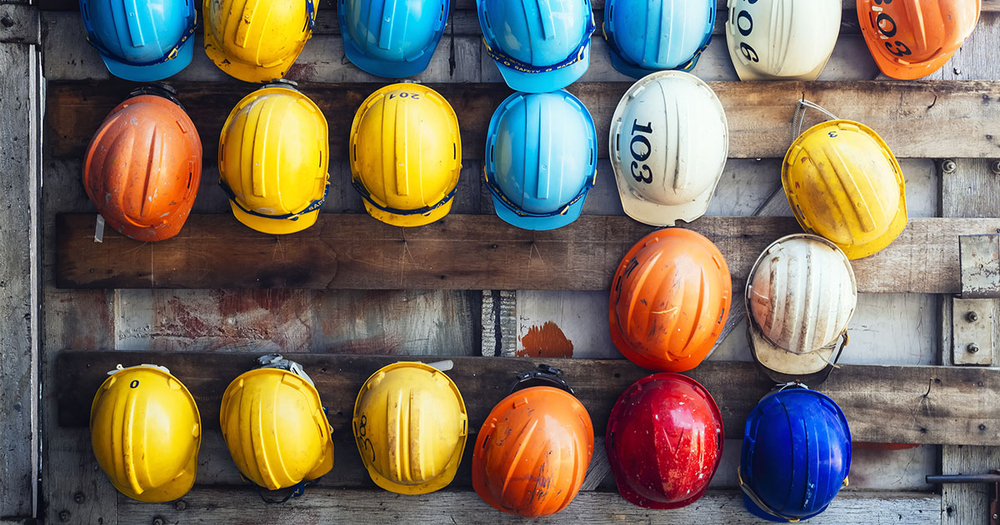
The Occupational Safety and Health Administration (OSHA) estimates that nearly 6.5 million people work in construction in over 250,000 construction sites around the country. Though every workplace has its hazards, the fatal injury rate for construction workers is higher than the national average for all industries. Construction site safety is no joke, but many workers overlook the potential risks.
Though OSHA has set standards for worksite safety, accidents happen. Understanding and identifying potential workplace hazards is the first step in protecting yourself and your workforce. Read on to learn about common construction site mistakes and how to avoid them with safety gear.
According to the National Safety Council (NSC), a worker is injured on the job every 7 seconds. Common injuries range from sprains, strains, and tears to cuts, punctures, and lacerations. Construction is one of the top five occupations with the largest number of workplace injuries resulting in lost work days, contributing to a loss of over 104 million production days due to work-related injuries each year.
Every worksite is different, but the hazards of the construction industry are the same across the board. While extra care should be taken when working with heavy machinery and dangerous substances, some hazards are more prevalent than others.
According to OSHA citations, these are the most common mistakes reported in regards to construction site safety:
Perhaps the most significant item on this list in terms of avoiding injury is hazard communication. Failure to recognize and communicate worksite hazards to others working the site increases their risk for injury. In addition to being aware of potential hazards, you can protect yourself on the job by wearing the proper safety gear.
Some of the most common worksite injuries for construction include burns, electrocution, eye injury, broken bones, neck or shoulder injury, back injury, illness caused by chemical exposure, and head/brain injury. Recognizing the hazards associated with your line of work and your particular worksite is the best way to protect yourself and your team. Even if you know the potential hazards, accidents can still happen but there are simple ways to protect yourself.
Here are some tips for protecting yourself on the job:
Now that you have a better understanding of potential construction site safety issues, you can see the importance of wearing the proper safety gear. Read on to see our top product recommendations for construction site safety.
Depending on where you work, you may be required to wear certain gear according to OSHA standards. It never hurts to add an extra layer of protection, however, or to upgrade your standard equipment to something even better.
Here are some of our top recommendations for construction site safety gear:
OSHA safety standards require construction workers to wear Class 2 or 3 ANSI/ISEA 107-2004 personal protective apparel. Visibility gear is designed to improve safety in active work sites where workers are exposed to traffic or construction vehicles.
Falls from heights and falling objects pose the greatest risk for head injuries on the job site. Head protection gear like hard hats, helmets, and visors help keep you safe on the job.
According to the CDC, more than 10,600 eye injuries occur on job sites each year. Primary hazards include nails, splinters, pieces of metal, and cute wire ends flying in the air as well as cement dust, sawdust, grit, and chemicals. Protective eyewear creates a protective barrier against worksite hazards.
Occupational hearing loss is one of the most common work-related injuries, according to the CDC. It affects about 22 million workers each year but can easily be prevented by wearing proper hearing protection.
Common worksite hand injuries include lacerations, crushes, avulsions or detachments, punctures, and fractures. According to the U.S. Bureau and Labor Statistics, more than 70% of workers who sustain these injuries were not wearing safety work gloves at the time.
Foot injuries are some of the most common workplace injuries and these injuries are some of the most painful and slow to heal. Common foot injuries include punctures, crushes, sprains, and lacerations resulting from slips, trips, and falls. Safety footwear keeps you protected on the job.
When it comes to workplace safety, it pays to think ahead. Each time you enter the work site, take a moment to identify potential hazards and ensure that you have the proper safety gear to protect yourself. Safety is a state of mind and it is one that should always be active when on the job.